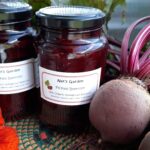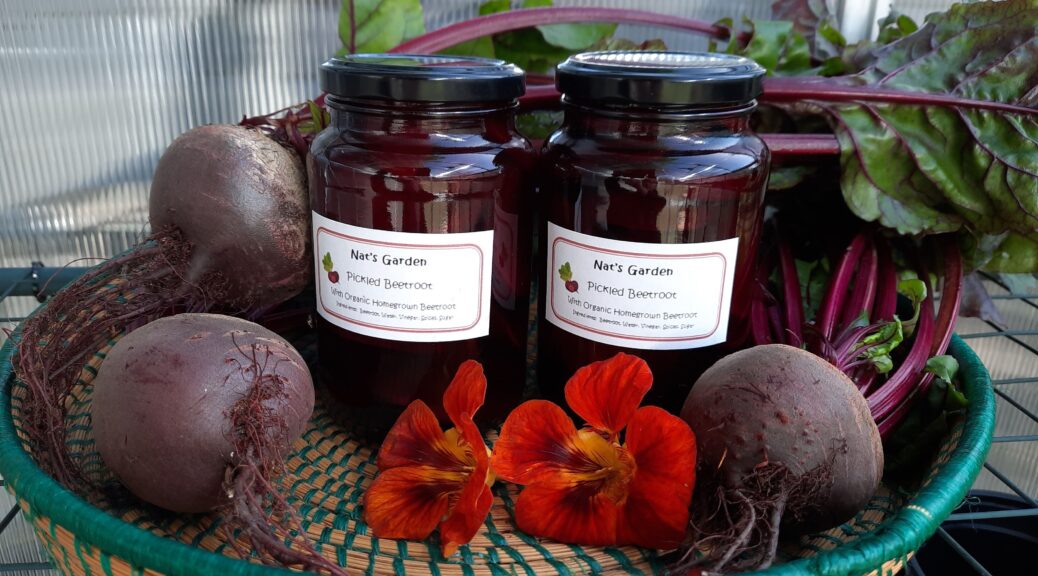
How to make Pickled Beetroot
As this year rapidly draws to a close and I reflect on the gardening year that was, one highlight in my veggie garden would be my beetroot crop. It is interesting to note what grows well in one season may not be successful in another year at all. Such is the story of my beetroot. Needless to say 2022 produced an abundance of these delicious red-rooted veg. This simple, no fuss recipe for pickled beetroot is what I use to preserve them. Thus ensuring I have beetroot to enjoy until the next harvest.
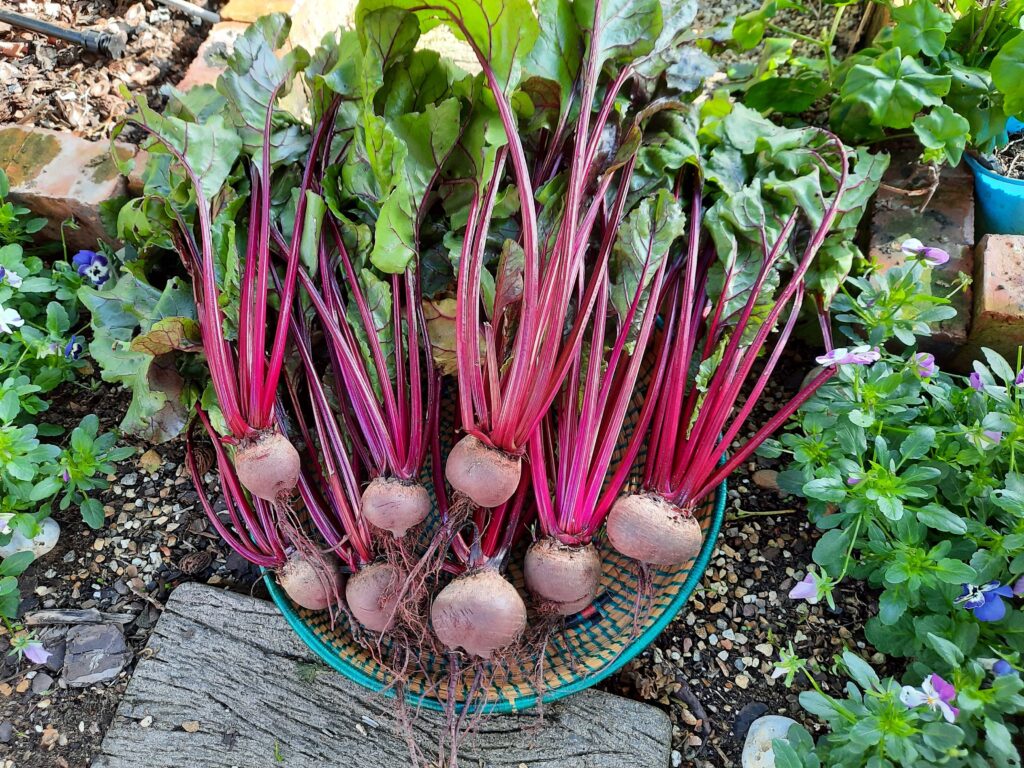
Growing Beetroot
Beetroots grow best in loose, well-composted and well-draining soil. They prefer full sun but will also grow in semi shade. This is good news for gardeners in very warm summer climates as beetroot tends to bolt in hot weather.
Beetroots are not fond of being transplanted as this disturbs their roots so where possible sow them in situ. Did you know that each beetroot seed is actually a little seed bundle of about four seeds? That is why one often has several seedlings germinating tightly next to each other. It will be necessary to pinch out the weaker seedlings to ensure the root of the strongest plant has enough space to grow to a good size.
Soaking the seeds overnight before planting helps speed up the germination process. So far I have only grown Detroit Dark Red and Crimson Globe but there are numerous other beetroot varieties from which to choose. If you are looking for some interesting colours go for Golden Globe or Chioggia with its white and red concentric circles.
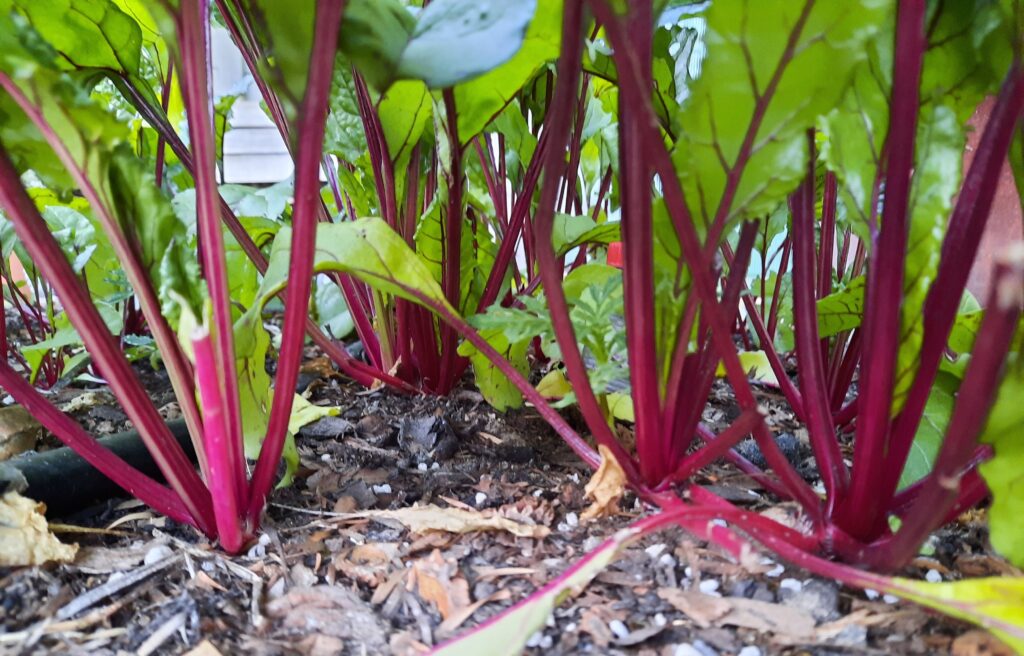
Fun Fact – The circles in a beetroot are alternate rings of tissue that store sugar and transport water and nutrients to the leaves.
The seedlings enjoy regular watering all through the growing season and in my experience it is worthwhile feeding them with an organic fertiliser every four to six weeks.
Once established, I found them to be quite resistant to pests. The worst I had to deal with were a few fuzzy caterpillars munching on the leaves. It may be a good idea to keep a careful watch for snails and slugs too.
I usually harvest the beetroot once they are between golf ball and tennis ball size.
Nutritious from root to tip
These veg are very nutritious. Beetroots are a good source of Vitamins A, B and C. They are full of fiber and also contain beta-carotene and folic acid. Beetroots also provide a source of minerals such as iron, manganese, phosphorus and calcium. Thus they promote healthy cell growth as well as being good for the circulatory system. A veg even known to possibly lower blood pressure.
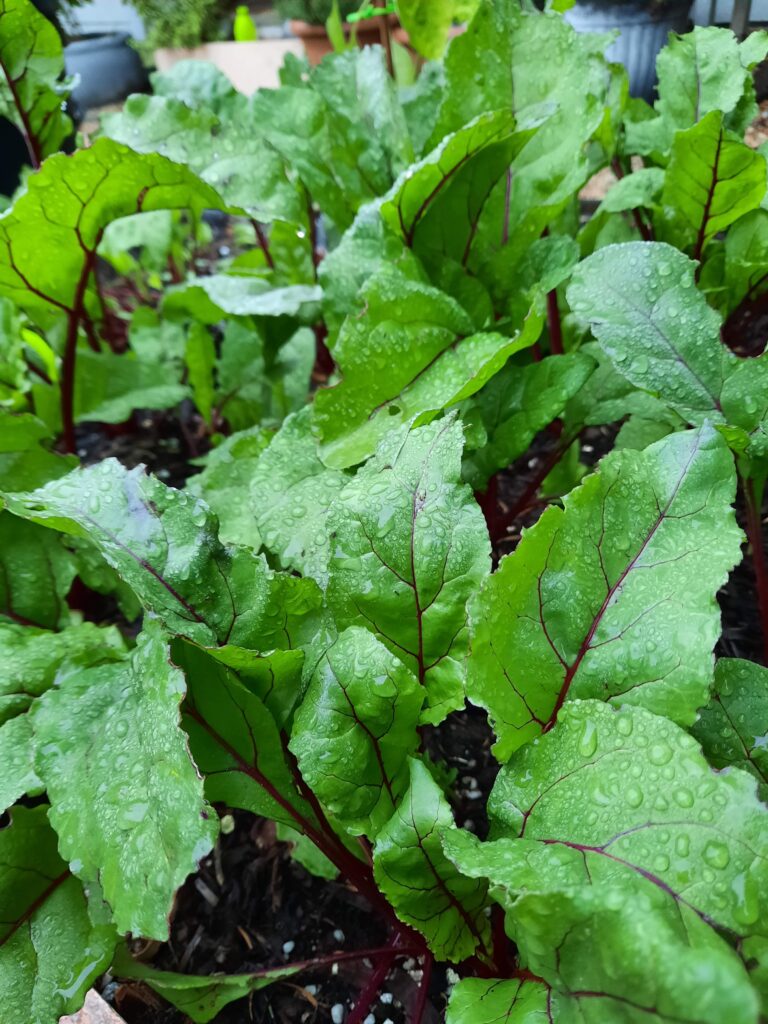
The leaves are actually more nutritious than the roots and can be added to salads or stir fried like spinach.
The roots can be used in just about every course on a menu – from grated in salads, to being used in dips and sauces, roasted and not to mention even incorporated in desserts.
But I’m going to share my recipe on how to make pickled beetroot. A great way to preserve your harvest for the months to come.
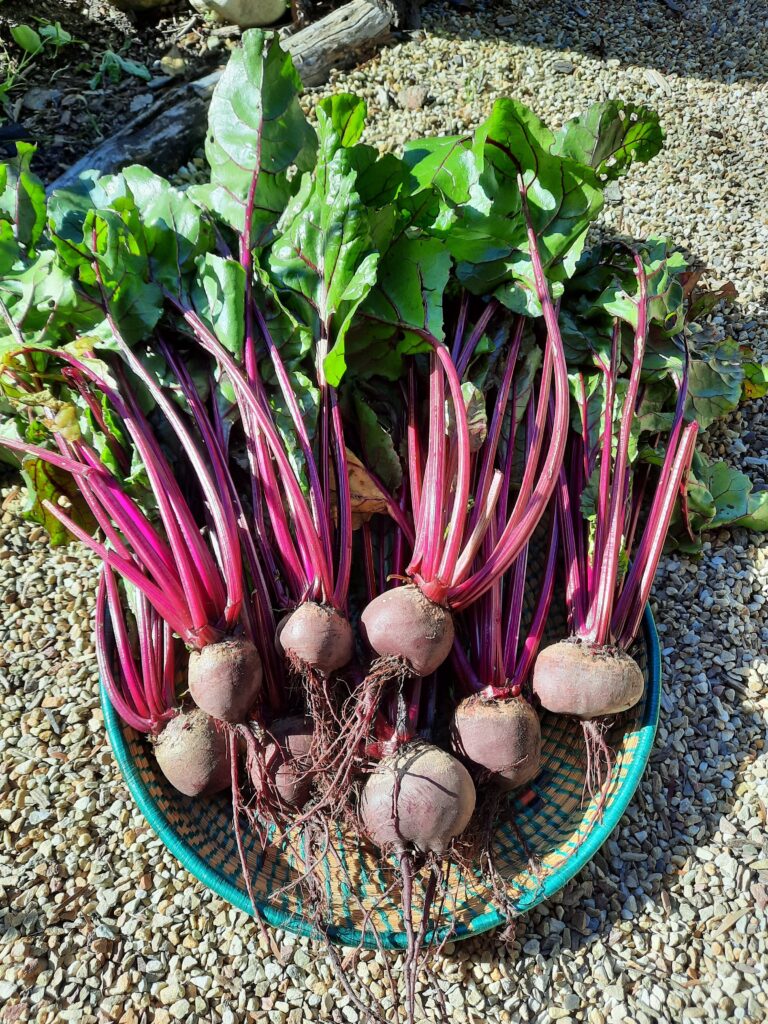
Pickled Beetroot
The recipe is actually quite straight forward. The one I use is an adaption from The Seed Collection. Tastes vary so to me the secret lies in the combination of pickling spices used. I include coriander, mustard seeds, cumin, peppercorns and fennel seeds. I also add bay leaves to the mix. You can experiment to see what ratio of spices best suits your taste buds.
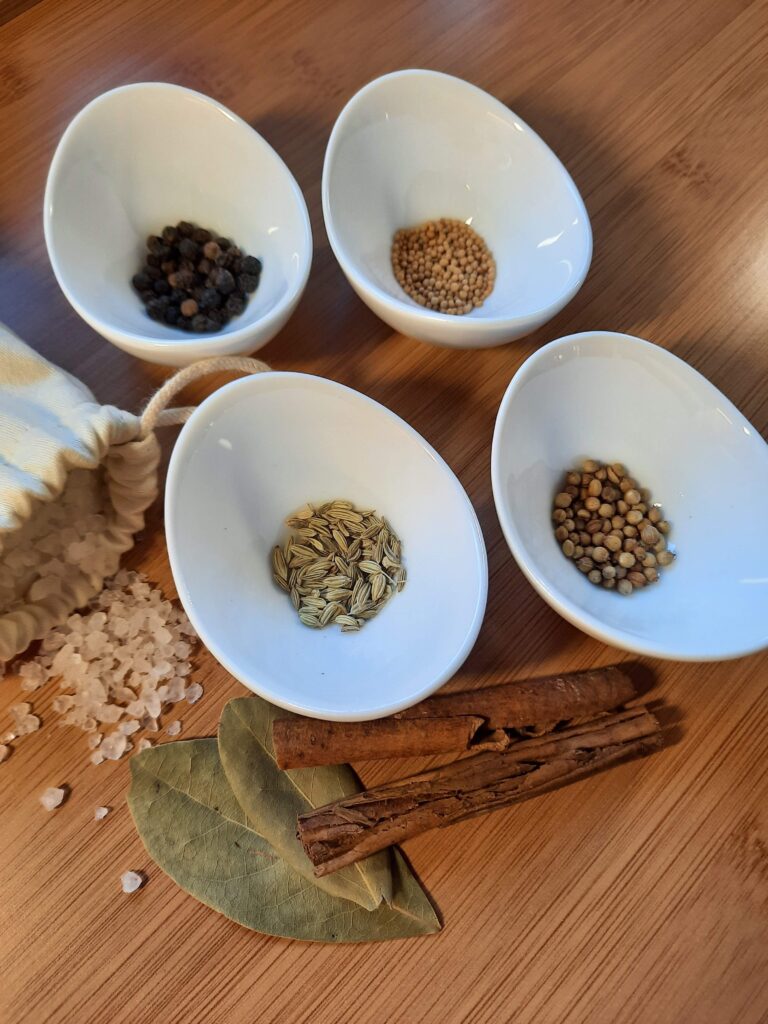
Another plus is that the recipe can be adapted depending on how many beetroots you happen to harvest. If you don’t have the recommended 2.5 kg then one can increase or decrease the ingredients accordingly without compromising on taste. From a practical point though it would be better to have at least a kilogram of beetroot to pickle.
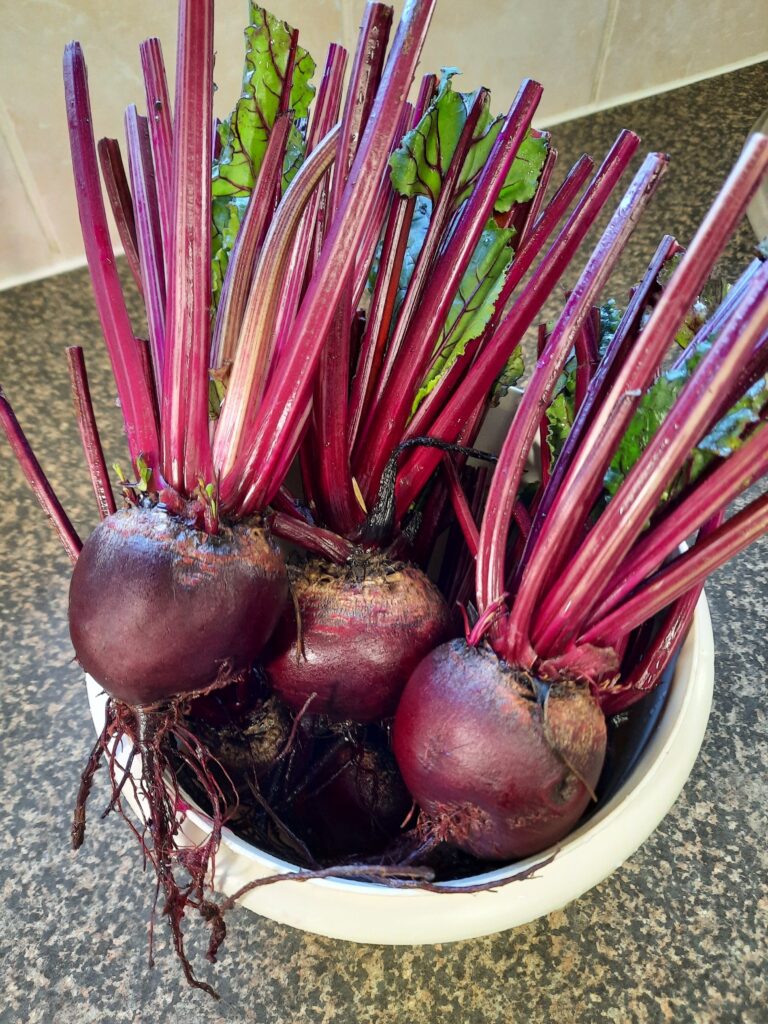
Preparing the beetroots
Give the beetroots a good scrub to remove any sand and grit. Trim the stalks and remove the stringy root fibers. Cover the beetroots with water and boil until they are tender.
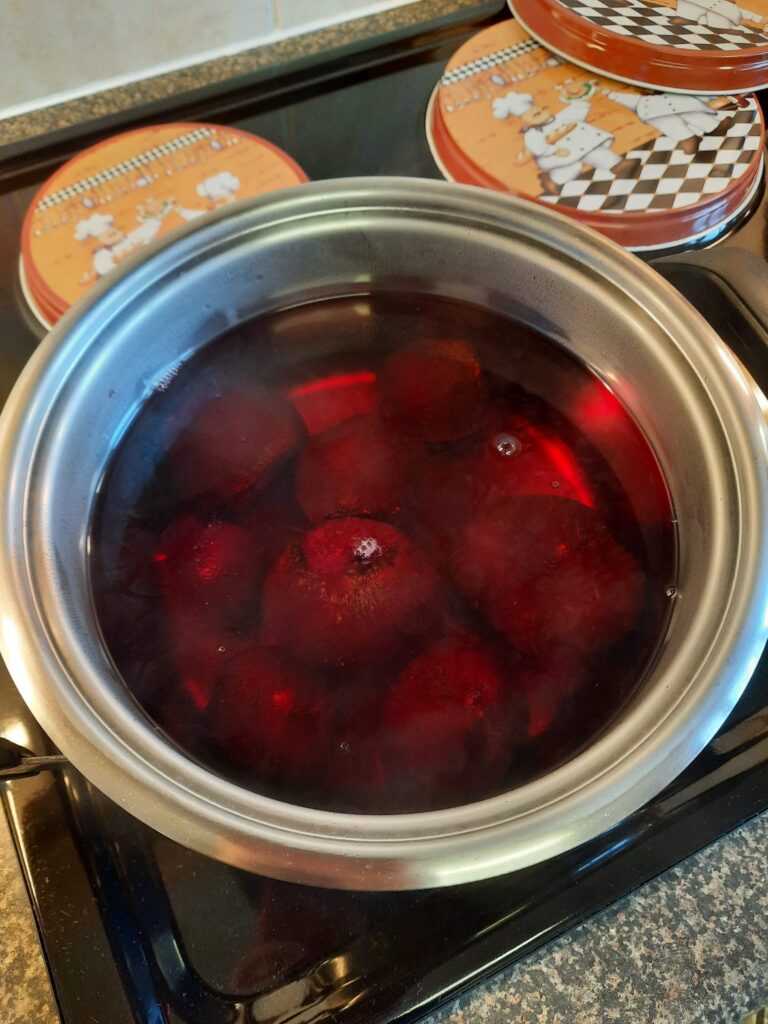
Let the beetroots cool a bit after boiling them. You’ll find it is so much easier to remove the skins by sliding your thumb over them. Be prepared for pink fingers though!
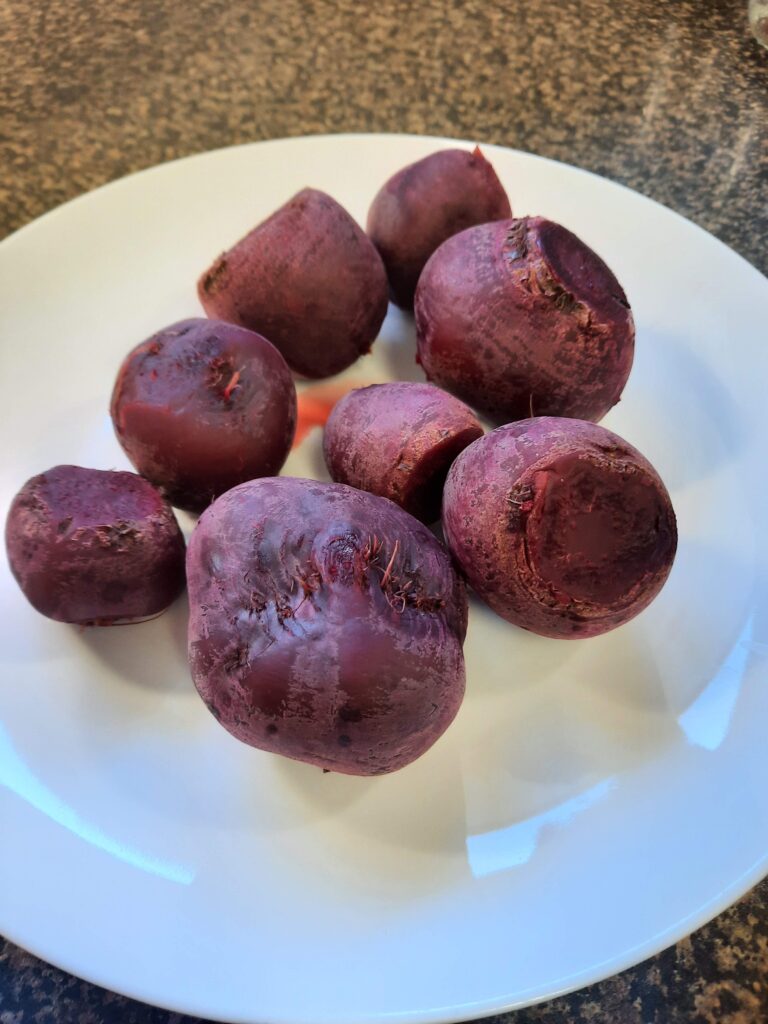
Use the time while they are cooling to prepare the pickling liquid. This is a combination of vinegar, salt, some of the beetroot water from cooking them, sugar and spices. I find that apple cider vinegar has a more subtle flavour compared to spirit vinegar but one can use either. After simmering the pickling liquid for five minutes I let it stand to infuse while I’m slicing the beetroots.
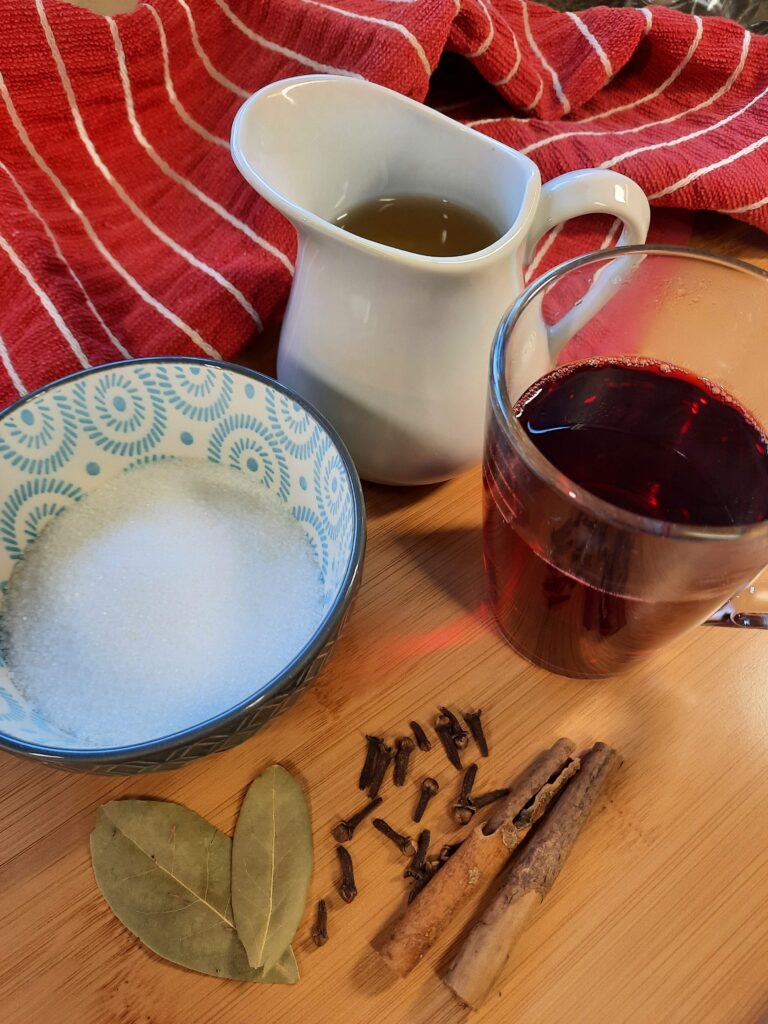
By now the beetroots should have cooled down sufficiently to be able to handle them. Trim away any blemishes, peel them and slice them thinly. 4 to 5 mm should do. It may be necessary to halve some of the slices to fit through the neck of the jar.
Ensure you have your sterilised glass jars on hand for the next step. (Refer to the recipe notes on how to sterilise the jars and lids). Pack the slices into the jars, strain the pickling juice and fill the jars. Seal tightly. If you are able to resist, leave the pickled beetroot for about two weeks to let the flavours infuse. Then it’s time to enjoy!
Pickled Beetroot
Materials
- 2½ kg Beetroot, stems removed
- 4½ cups Apple Cider Vinegar
- 1½ tsp Salt
- 2 cups Sugar
- 2½ cups Beetroot Water
- 2 Cinnamon Quills
- 6 Cloves, whole
- 2 tbsp Pickling Spices
Instructions
- Scrub the beetroots to remove any sand and grit. Cover them with water and boil until they are tender.
- Remove with a slotted spoon and allow the beetroots to cool. Retain the required amount of beetroot water for the pickling juice.
- Add the vinegar, salt, sugar, beetroot water and all the spices together and stir to dissolve the sugar. Simmer for 5 minutes.
- Have your sterilised jars and lids at hand. *
- Peel the beetroots and slice them thinly. Pack into the sterilised jars.
- Strain the pickling juice. Pour over the beetroot to cover and seal the jars tightly.
- Allow the bottles to cool before labeling them. The beetroot is ready to enjoy but by leaving the jars for about two weeks the pickling juice flavours will infuse with the beetroot and enhance the taste.
Notes
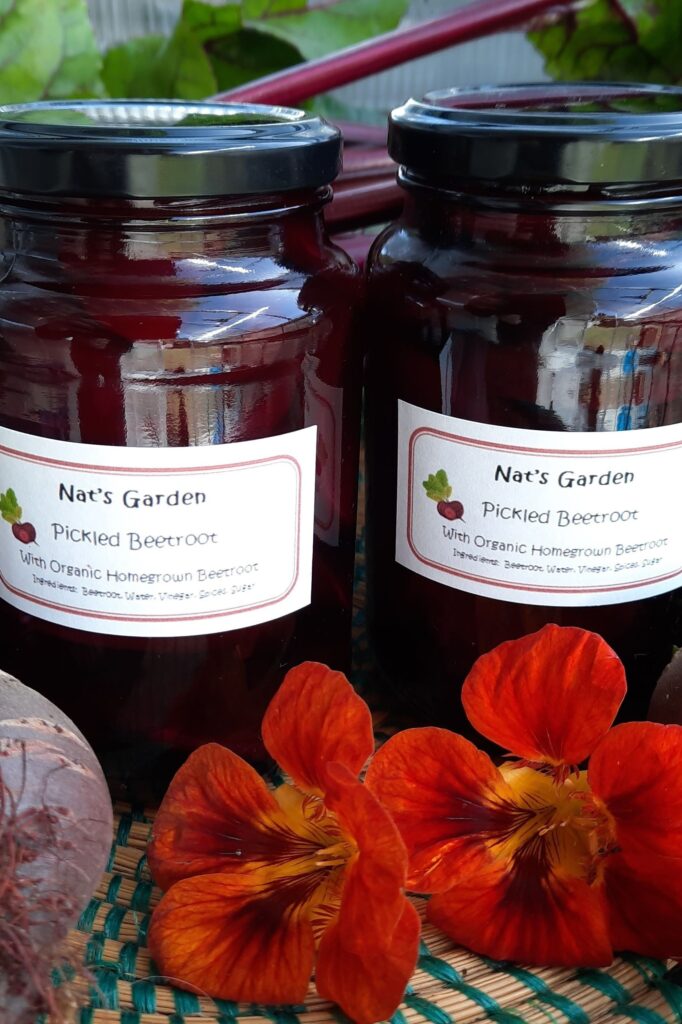
So if you enjoy pickling then feel free to check out my recipe for pickled cucumbers here.
One of my new year intentions is to grow some Chioggia beetroot and to pickle those. Just imagine the colours!
Until next time Happy New Year and happy gardening.
Did you find this article interesting? If so, please share it with your friends.
Reference sources: Wikipedia, The Gardener & Grow to Eat
